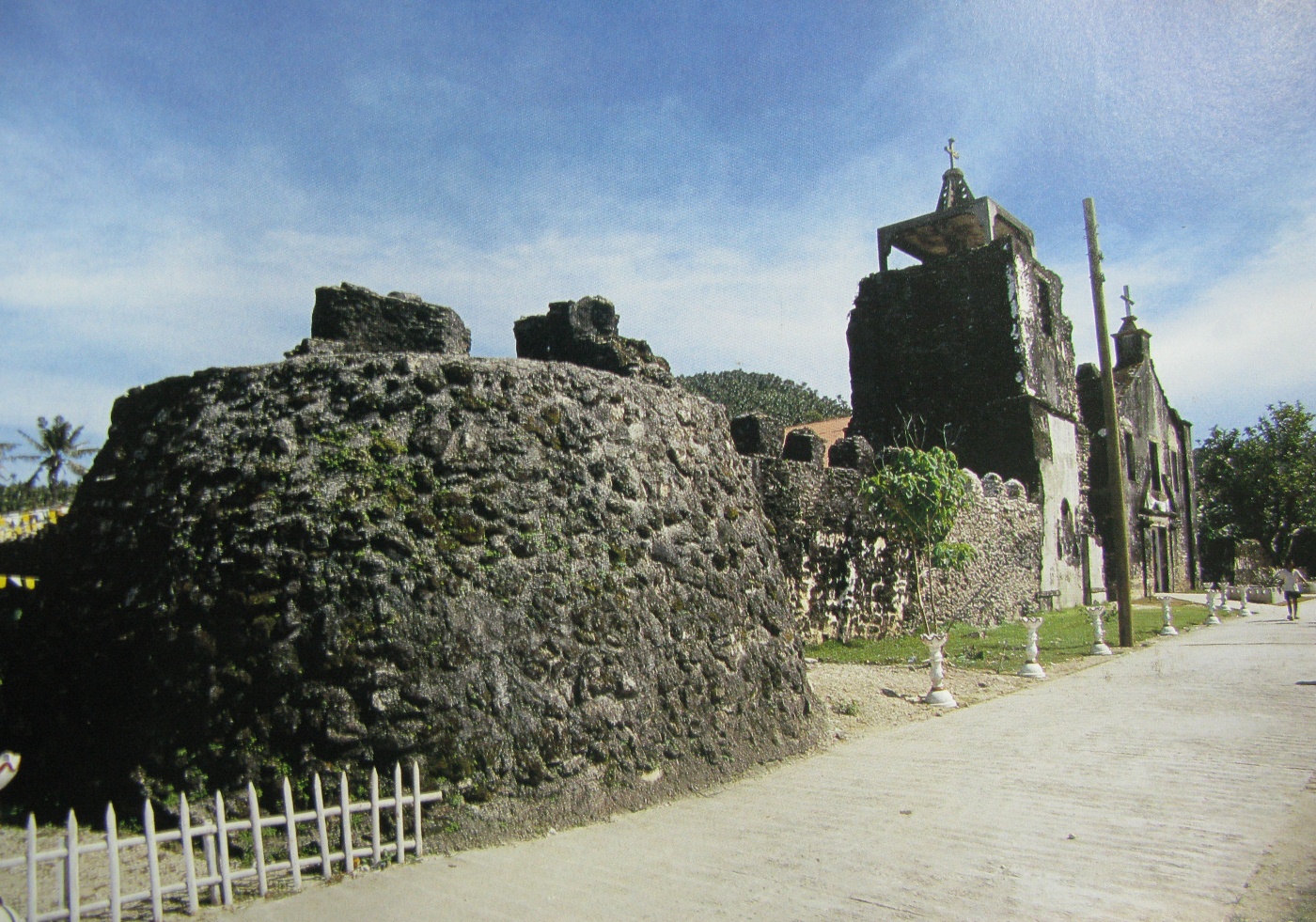Capul on:
[Wikipedia]
[Google]
[Amazon]
Capul, officially the Municipality of Capul ( war, Bungto han Capul; tl, Bayan ng Capul), is a 5th class island
 Capul Church and Fortress
:The Capul Church, built during the Spanish Colonial Period, is dedicated to St. Ignatius of Loyola and is surrounded by a square
Capul Church and Fortress
:The Capul Church, built during the Spanish Colonial Period, is dedicated to St. Ignatius of Loyola and is surrounded by a square Philippines & Cebu Real Estate
/ref> Capul Watchtower :Located on a hill near the Capul fort overlooking the town harbor, a stone watchtower was erected to serve as a sentry or warning system and a refuge for indigents during Moro raids. Bitō Cave :Bitō Cave, also known as Beto Cave, is a popular natural attraction located in Sawang. Timon-timon Rock :Timon-timon is a rudder-shaped rock formation located near the southern point of the island. Capul Island Lighthouse
Philippine Census Information
Local Governance Performance Management System
{{Authority control Municipalities of Northern Samar Islands of Northern Samar Island municipalities in the Philippines
municipality
A municipality is usually a single administrative division having corporate status and powers of self-government or jurisdiction as granted by national and regional laws to which it is subordinate.
The term ''municipality'' may also mean the go ...
in the province
A province is almost always an administrative division within a country or state. The term derives from the ancient Roman '' provincia'', which was the major territorial and administrative unit of the Roman Empire's territorial possessions ou ...
of Northern Samar, Philippines. According to the 2020 census, it has a population of 12,323 people.
A lighthouse was built on the island which served as a guidepost for the Acapulco-Manila galleon trade vessels passing through the treacherous waters of San Bernardino Strait. It also served as the capital of Samar from 1848 to 1852.
Capul is the only town in the province of Northern Samar with a distinct language, Inabaknon, instead of Waray, the native language spoken by the locals of Samar island. Inabaknon is unique in it being only distantly related to the languages spoken in the entire Visayas and Luzon regions. Instead, it is classified by linguists as a Sama-Bajaw language.
History
According to oral folk history, due to their not liking of the religion of the Moros who ruled over them, a group of people and their leader Abak fledBalabac
Balabac Island is the southernmost island of the Palawan province, and therefore the westernmost undisputed island in the Philippines, only about north from Sabah, Malaysia, across the Balabac Strait.
Administratively, the island forms the main ...
and sailed until reaching the island of Capul. Here, they established a settlement which they called Abak.
By 1610, Spanish Jesuits had arrived in the island and construction of the first church began around this period.
According to folklore, the name Capul is said to be derived from the word Acapulco, an old trading post in Mexico.
Geography
The municipality is contiguous with Capul Island, located at the southern entrance to the San Bernardino Strait.Barangays
Capul is politically subdivided into 12barangay
A barangay (; abbreviated as Brgy. or Bgy.), historically referred to as barrio (abbreviated as Bo.), is the smallest administrative division in the Philippines and is the native Filipino term for a village, district, or ward. In metropolita ...
s.
*Aguin
*Jubang
*Landusan
*Oson
*Poblacion Barangay 1
*Poblacion Barangay 2
*Poblacion Barangay 3
*Poblacion Barangay 4
*Poblacion Barangay 5
*Sagaosawan
*San Luis
*Sawang
Climate
Demographics
Economy
Language
Capul has a different language from the rest of Northern Samar and the rest of Eastern Visayas. The native language in the island-municipality is Inabaknon. Inabaknon has been classified by linguists as a Sama-Bajaw language closely related to those found in Mindanao, rather than aVisayan language
The Bisayan languages or Visayan languages are a subgroup of the Austronesian languages spoken in the Philippines. They are most closely related to Tagalog and the Bikol languages, all of which are part of the Central Philippine languages. Mo ...
. Nonetheless, the Capul people can speak and understand the Waray language as it is spoken by the majority of the people in Northern Samar.
Tourism
fort
A fortification is a military construction or building designed for the defense of territories in warfare, and is also used to establish rule in a region during peacetime. The term is derived from Latin ''fortis'' ("strong") and ''facere'' ...
with bulwarks of dissimilar designs. The church structure was actually the third that was built on the site. The first two structures, made of hard wood and nipa roofs, were razed when Moro pirates plundered the island in 1615 and 1768. In 1781, Fr. Mariano Valero, a Spanish architect-priest led the restoration of the church and built the stonewall fortress similar to that in Intramuros
Intramuros (Latin for "inside the walls") is the historic walled area within the city of Manila, the capital of the Philippines. It is administered by the Intramuros Administration with the help of the city government of Manila.
Present-day ...
, Manila
Manila ( , ; fil, Maynila, ), officially the City of Manila ( fil, Lungsod ng Maynila, ), is the capital of the Philippines, and its second-most populous city. It is highly urbanized and, as of 2019, was the world's most densely populate ...
that would fortify it against Moro attacks./ref> Capul Watchtower :Located on a hill near the Capul fort overlooking the town harbor, a stone watchtower was erected to serve as a sentry or warning system and a refuge for indigents during Moro raids. Bitō Cave :Bitō Cave, also known as Beto Cave, is a popular natural attraction located in Sawang. Timon-timon Rock :Timon-timon is a rudder-shaped rock formation located near the southern point of the island. Capul Island Lighthouse
References
*External links
* Philippine Standard Geographic CodePhilippine Census Information
Local Governance Performance Management System
{{Authority control Municipalities of Northern Samar Islands of Northern Samar Island municipalities in the Philippines